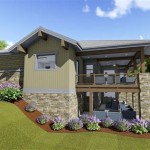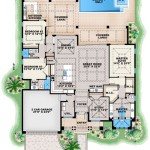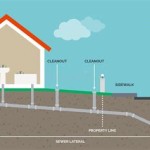Free App To Design a House Floor Plan: A Comprehensive Overview
Designing a house floor plan can be a daunting task, often involving complex software and specialized skills. However, the advent of user-friendly mobile applications has democratized this process, offering readily accessible tools to create and visualize floor plans without the need for expensive professional software. This article explores the landscape of free apps available for designing house floor plans, detailing their features, functionalities, and suitability for various user needs.
The availability of free apps caters to a broad audience, ranging from homeowners looking to remodel a single room to aspiring architects seeking a convenient design tool for initial concept development. These applications typically offer a simplified interface compared to professional-grade software, prioritizing ease of use and accessibility over advanced technical capabilities. This focus on user-friendliness is crucial in empowering individuals with limited experience in architectural design to confidently create and modify their own floor plans.
Key Point 1: Accessibility and User Interface
One of the primary advantages of free floor plan design apps is their accessibility. Many of these apps are available on both iOS and Android platforms, allowing users to design on smartphones and tablets. This mobility enables users to work on their floor plans from anywhere, fostering flexibility and convenience. The accessibility extends beyond platform availability; a well-designed user interface is crucial. Free apps often prioritize intuitive navigation, drag-and-drop functionality, and clear visual cues to guide users through the design process.
A key feature impacting the user interface is the availability of a pre-loaded library of architectural elements. These libraries typically include walls, doors, windows, furniture, and other standard building components. Users can simply drag and drop these elements onto the virtual canvas to construct their floor plan. The ability to easily resize and reposition these elements provides granular control over the layout and design. Furthermore, many apps offer customizable options for these elements, such as changing the dimensions of a wall or selecting different door styles. This level of customization allows users to tailor the design to their specific requirements and preferences.
Another important aspect of the user interface is the availability of grid systems and measuring tools. These tools assist in creating accurate and proportional layouts. Grid systems provide visual guidelines for aligning elements, while measuring tools allow users to input precise dimensions for walls, rooms, and other features. Some apps even offer automatic measurement capabilities, which automatically calculate the area of a room or the length of a wall as it is being drawn. This functionality streamlines the design process and minimizes the risk of errors.
Beyond the core design functionalities, many free apps incorporate features that enhance the user experience. These may include tutorial videos, help sections, and interactive guides that provide step-by-step instructions on how to use the app's various features. Furthermore, some apps offer community forums where users can share their designs, ask questions, and receive feedback from other users. This collaborative environment can be particularly helpful for users who are new to floor plan design.
Key Point 2: Core Functionality and Design Features
The core functionality of a free floor plan design app revolves around the ability to accurately represent a space and experiment with different layouts. This functionality includes drawing walls, adding doors and windows, and placing furniture. The precision with which these elements can be rendered is a crucial factor in determining the usefulness of an app. While professional software often offers micron-level accuracy, free apps generally focus on providing a sufficient level of detail for conceptualization and initial planning.
Most free apps allow users to create 2D floor plans. These 2D representations provide a top-down view of the space, showing the arrangement of walls, rooms, and furniture. Some apps also offer the ability to generate 3D models from the 2D floor plan. This 3D visualization allows users to gain a better understanding of the spatial relationships and overall aesthetics of the design. The quality and realism of the 3D rendering can vary significantly between different apps. Some apps offer basic 3D models with simple textures and lighting, while others provide more sophisticated renderings with realistic materials and shadows.
Beyond basic layout design, many free apps offer additional features that enhance the design process. These may include tools for adding stairs, fireplaces, and other architectural features. Some apps also offer the ability to import images or blueprints as a background, allowing users to trace over existing floor plans. This feature can be particularly useful for remodeling projects or for creating a digital version of a paper-based floor plan. Another increasingly common feature is the ability to generate a bill of materials, which lists the materials needed to construct the floor plan. This feature can be helpful for estimating costs and planning the construction phase of a project.
The ability to customize the appearance of the floor plan is another important aspect of core functionality. Free apps typically offer a range of options for changing the colors and textures of walls, floors, and furniture. Some apps also allow users to import their own images or patterns to use as custom textures. This level of customization allows users to create floor plans that accurately reflect their personal style and preferences. Moreover, some apps include features for adding annotations and labels to the floor plan, making it easier to communicate the design to others.
Key Point 3: Limitations and Alternatives
While free floor plan design apps offer numerous advantages, it's crucial to acknowledge their limitations. These limitations often stem from the need to balance functionality with accessibility and cost. Compared to professional software, free apps typically offer a limited range of features, less precision, and fewer options for customization.
One common limitation is the size and complexity of the floor plans that can be created. Some free apps restrict the number of rooms or the overall square footage of the design. This limitation can be problematic for users who are designing large or complex buildings. Another common limitation is the availability of specific architectural elements. The pre-loaded libraries of free apps may not include all the elements that a user needs, forcing them to find alternative solutions or compromise on their design.
The export options offered by free apps can also be limited. Some apps only allow users to save their designs in proprietary file formats that can only be opened by the app itself. This limitation can make it difficult to share the design with others or to import it into other software programs. Furthermore, the quality of the exported images or documents may be lower than that of professional software. This can be a concern for users who need to create high-resolution renderings or detailed construction drawings.
For users who require more advanced features or greater precision, there are several alternatives to free floor plan design apps. Professional architectural software programs, such as AutoCAD, Revit, and ArchiCAD, offer a comprehensive range of tools for creating detailed and accurate floor plans. However, these programs are typically expensive and require significant training to use effectively. Another alternative is online floor plan design services, which offer a combination of user-friendly interfaces and professional-grade features. These services typically operate on a subscription basis, offering different pricing tiers based on the level of functionality required.
Finally, it is essential to consider the intended use of the floor plan when choosing a design tool. For simple remodeling projects or for visualizing initial concepts, a free app may be sufficient. However, for complex projects that require precise measurements, detailed construction drawings, or collaboration with architects and contractors, a more robust software solution may be necessary. The choice of tool will ultimately depend on the individual's specific needs and budget.
In summary, free apps for designing house floor plans provide accessible and user-friendly tools for creating and visualizing spatial layouts. While they have limitations compared to professional software, they offer a valuable starting point for homeowners, aspiring designers, and anyone seeking to explore design possibilities without significant financial investment.
Floor Plan Creator Apps On Google Play

20 Best Floor Plan Apps To Create Your Plans Foyr

Floor Plan App Live Home 3d

6 Best Free Room Design Floorplan Moving Com

Roomsketcher App

Free House Design Home And Plans

20 Best Floor Plan Apps To Create Your Plans Foyr

Home Design Your House
Floor Plan Creator Apps On Google Play

Floor Plan Creator And Designer Free Easy App
Related Posts








